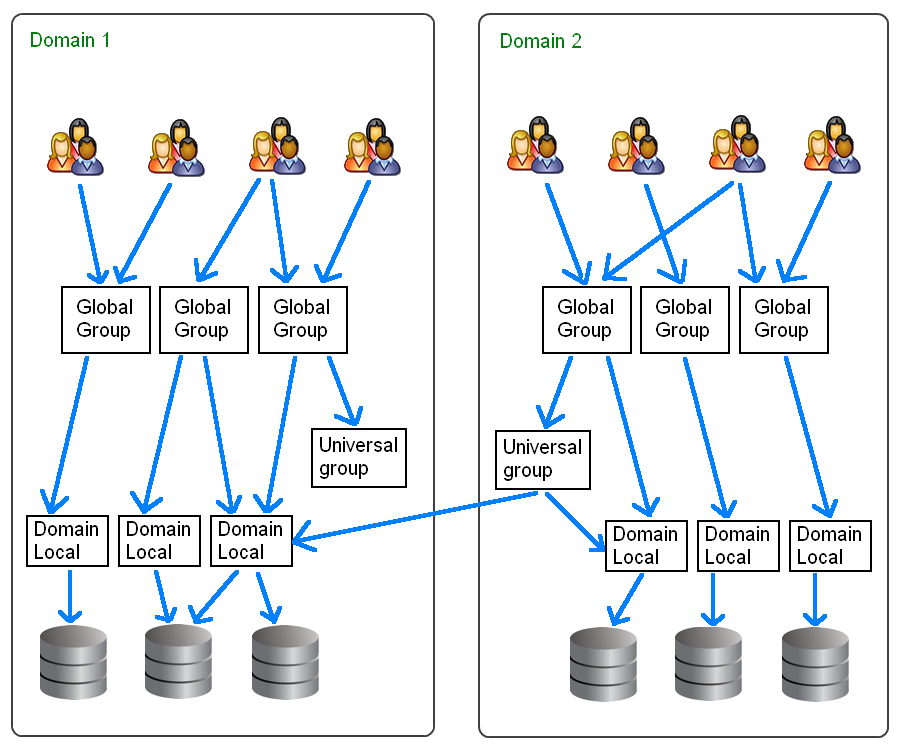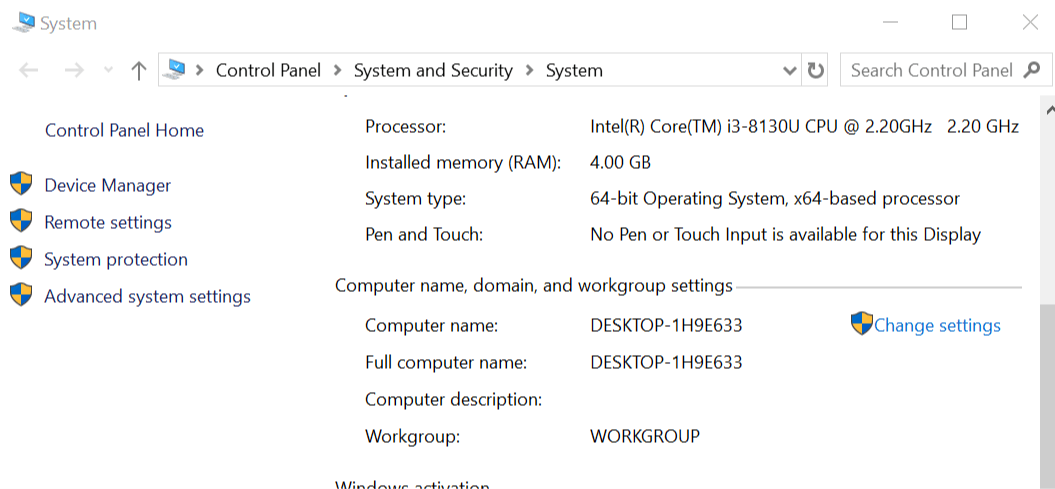

- PCs that belong to a Windows domain (common for laptops used in a corporate office) cannot share their files or printers with home groups, although they can join and access the shared resources of others. IPv6 must be running on the local network for HomeGroup to work. Windows 7 enables IPv6 by default.
- Nano domain join for use in SCCM task sequence! GitHub Gist: instantly share code, notes, and snippets.
Hello All,I wish to share this issue that I encountered recently. It was related to duplicate SID of the clone OS that I received while trying to join my Hyp. Windows Server information, news and tips - SearchWindowsServer.
After installing a Windows Server and configuring the initial settings, one of the first steps that will be needed is to become a member server, ie to join it in the local Active Directory environment. This can be done either through the GUI or using PowerShell / SConfig for the Core version of Windows Server.
Of course, before you start troubleshooting why you can not complete such an easy process, it is a good idea to know what are the basic prerequisites for joining a computer in the domain. Hint: Check the DNS server settings.
Also, before proceeding, it is a good idea to change the name of the server so that you can identify it more easily in your environment.
Windows Server 2016 AD domain join using the GUI

Open the Server Manager window and go to the Local Server section. Here, click Workgroup.
In the window that appears, click the Change button.
Then, in the Member of section, enable the Domain option, type the domain name of your local Active Directory, and click OK.
You will then be prompted to enter the login information of a domain user who has the right to include the server in the domain, such as the domain administrator.

Join Domain Cannot Complete This Function Calculator
The corresponding successful domain login message will be displayed. At this point, you will be prompted, and it is a good idea not to skip it, to restart the server to complete the process.
Windows Server 2016 AD domain join using PowerShell
Open a PowerShell window with administrator rights and type the following command by changing DomainName to yours and DomainUser with a domain user account.
For example, the command would look something like this:
After the command runs, you will need to type the user’s password and then restart the machine to complete the process. Since you have the PowerShell window open, use the Restart-Computer cmdlet to do so immediately.
Windows Server 2016 AD domain join using SConfig
Join Domain Cannot Complete This Function Using
Type sconfig at the command prompt or PowerShell to enter the Server Configuration environment.
Type 1 to begin the domain registration process.
Type D to continue.
Type the Active Directory domain name.
Type the user who has the right to join the server in the domain. Once you press Enter you will be prompted to enter the password.
You will also be prompted to change the computer name if desired.
That’s it! Once you join it in the domain, you will be then prompted to restart the server to complete the process.

- PCs that belong to a Windows domain (common for laptops used in a corporate office) cannot share their files or printers with home groups, although they can join and access the shared resources of others. IPv6 must be running on the local network for HomeGroup to work. Windows 7 enables IPv6 by default.
- Nano domain join for use in SCCM task sequence! GitHub Gist: instantly share code, notes, and snippets.
Hello All,I wish to share this issue that I encountered recently. It was related to duplicate SID of the clone OS that I received while trying to join my Hyp. Windows Server information, news and tips - SearchWindowsServer.
After installing a Windows Server and configuring the initial settings, one of the first steps that will be needed is to become a member server, ie to join it in the local Active Directory environment. This can be done either through the GUI or using PowerShell / SConfig for the Core version of Windows Server.
Of course, before you start troubleshooting why you can not complete such an easy process, it is a good idea to know what are the basic prerequisites for joining a computer in the domain. Hint: Check the DNS server settings.
Also, before proceeding, it is a good idea to change the name of the server so that you can identify it more easily in your environment.
Windows Server 2016 AD domain join using the GUI
Open the Server Manager window and go to the Local Server section. Here, click Workgroup.
In the window that appears, click the Change button.
Then, in the Member of section, enable the Domain option, type the domain name of your local Active Directory, and click OK.
You will then be prompted to enter the login information of a domain user who has the right to include the server in the domain, such as the domain administrator.
Join Domain Cannot Complete This Function Calculator
The corresponding successful domain login message will be displayed. At this point, you will be prompted, and it is a good idea not to skip it, to restart the server to complete the process.
Windows Server 2016 AD domain join using PowerShell
Open a PowerShell window with administrator rights and type the following command by changing DomainName to yours and DomainUser with a domain user account.
For example, the command would look something like this:
After the command runs, you will need to type the user’s password and then restart the machine to complete the process. Since you have the PowerShell window open, use the Restart-Computer cmdlet to do so immediately.
Windows Server 2016 AD domain join using SConfig
Join Domain Cannot Complete This Function Using
Type sconfig at the command prompt or PowerShell to enter the Server Configuration environment.
Type 1 to begin the domain registration process.
Type D to continue.
Type the Active Directory domain name.
Type the user who has the right to join the server in the domain. Once you press Enter you will be prompted to enter the password.
You will also be prompted to change the computer name if desired.
That’s it! Once you join it in the domain, you will be then prompted to restart the server to complete the process.
Related posts:
Comments
EventID.Net
As per M324383, this error code means that there was a failure to resolve a security account to a security identifier (SID). This typically occurs either because an account name was mistyped or because the account was deleted after it was added to the security policy setting. This typically occurs in the User Rights section or the Restricted Groups section of the security policy setting. It may also occur if the account exists across a trust and then the trust relationship is broken.
Here are some examples when this error may occur:
- M174729 - In this case, the error occurs if Exchange setup is unable to get the SID for the Microsoft Exchange Service Account. Usually this means that the Windows NT Primary Domain Controller is unavailable and setup was unable to contact any Backup Domain Controllers.
- M190822 - If the Windows NT service RPC Configuration has been removed, this problem will appear when you try to install Exchange.
- M238128 - If a group name contains a forward slash ( / ) or semicolon ( ; ), this error will appear in FrontPage.
- M247325 - In this case, the error can occur if the computer is in a workgroup and the Administrator account or the account that you are logged on with has been renamed.
- M249280 - If you receive this error after entering the password for the Exchange Server service account, note that Exchange Server 5.5 only recognizes account entries in the format of DomainAccount, not in the [email protected] format.
- M273875 and M295335 - It is not possible to promote a computer named 'Internet' to a Domain Controller. Internet is a restricted Windows 2000 computer name and cannot be used by a domain controller, a member server, or a Microsoft Windows 2000 Professional-based client that is a member of a Windows 2000 domain. This error will appear if you try the promotion.
- M308787 - This problem occurs if you delete a user account at the operating system level under which SQL Server runs.
- M312164 - The error appears if a policy is assigning a user right to an SID for a deleted user.
- M827213 - This problem occurs if the KMS database contains a Microsoft Windows NT Security Identifier (SID) that is not mapped. An SID may not be mapped if the Windows NT user account that is associated with the SID has been deleted from the domain, but the SID still exists in the cryptographic service provider (CSP) database of KMS. Generally, this problem occurs if the Windows NT user account of a user who is a KMS administrator is deleted before the KMS Administrator permissions are removed from this user account.
- M839115 - In this case the problem is caused by an Antivirus program that is not Exchange aware.
- M883271 - The problem can appear if you have account names that use non-ASCII characters, such as ö and é.
See the links below for more information on this error.
EventID.Net
While people are used to see user names and assign rights and permissions using the friendly 'user name', internally, Windows is using the SID (security identifier) to intentify the users and the groups. A user SID looks something like S-1-5-21-197031408-981208221-617630493-1079. This way, we can change the user name and Windows does not need to adjust rights and permissions as the SID remains the same.
Now, some applications are not that smart to use just the SIDs and use the actual user or group name. If this is changed, then they are not able to find them and they generate this error. In other circumstances, if the user is deleted, the deletion is not propagated to all the Windows settings (a common one is the Group Policies) and when the applications that use these settings run, they are not able to find the user.
There is not much one can do to fix this as it is not an actual error but rather a warning. However, once one understands the cause of this error, it can enable logging or lookup up various configurations (depending on the application reporting this problem) and identify the missing users or groups.
Symbolic code: ERROR_NONE_MAPPED
